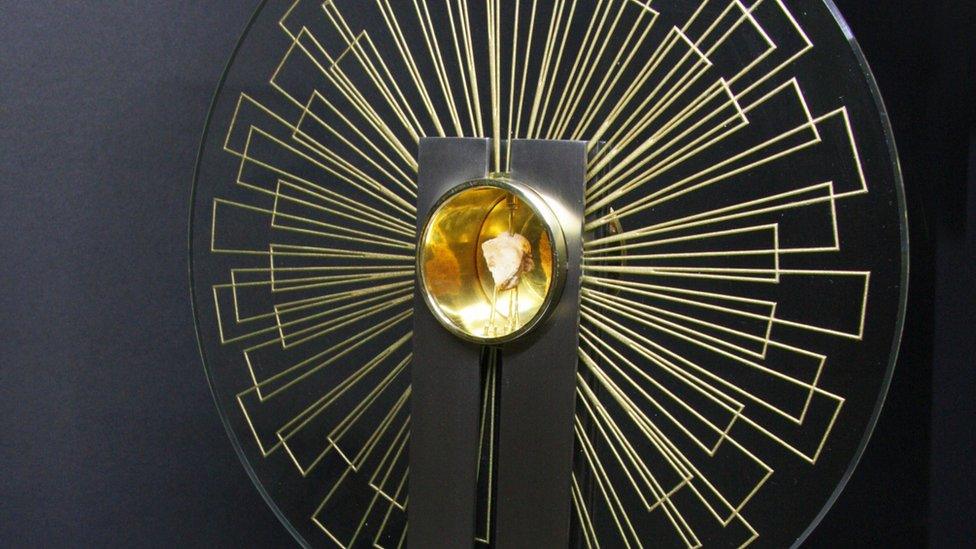Elbows, skulls and holy hands: Venerating England's saintly relics
- Published
More than 800 years after he was murdered at Canterbury Cathedral, a small piece of elbow bone thought to belong to St Thomas Becket has been the centrepiece of a week-long pilgrimage in London and Kent. Venerating saintly relics has long been a tradition of the faithful, with some of the more unusual attracting the most attention.

Relics of St Thomas Becket reunited
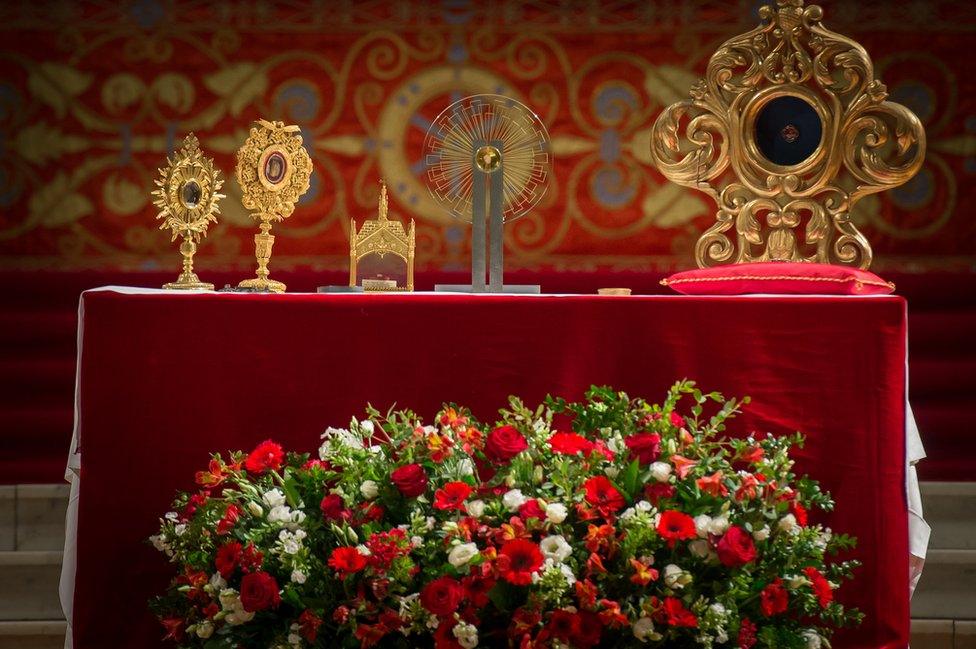
The small piece of bone thought to belong to St Thomas Becket has been temporarily reunited with several other relics revered for their associations with the assassinated archbishop.
They formed the central part of a Solemn Mass held at Westminster Cathedral in his honour.
A fragment said to be from Becket's skull, normally kept at Stonyhurst College in Lancashire, was among the relics placed on the altar.
The elbow bone, on a week-long pilgrimage from Hungary, was returned to the scene of his murder in Canterbury Cathedral this weekend.

Holy Hand of St Edmund Arrowsmith
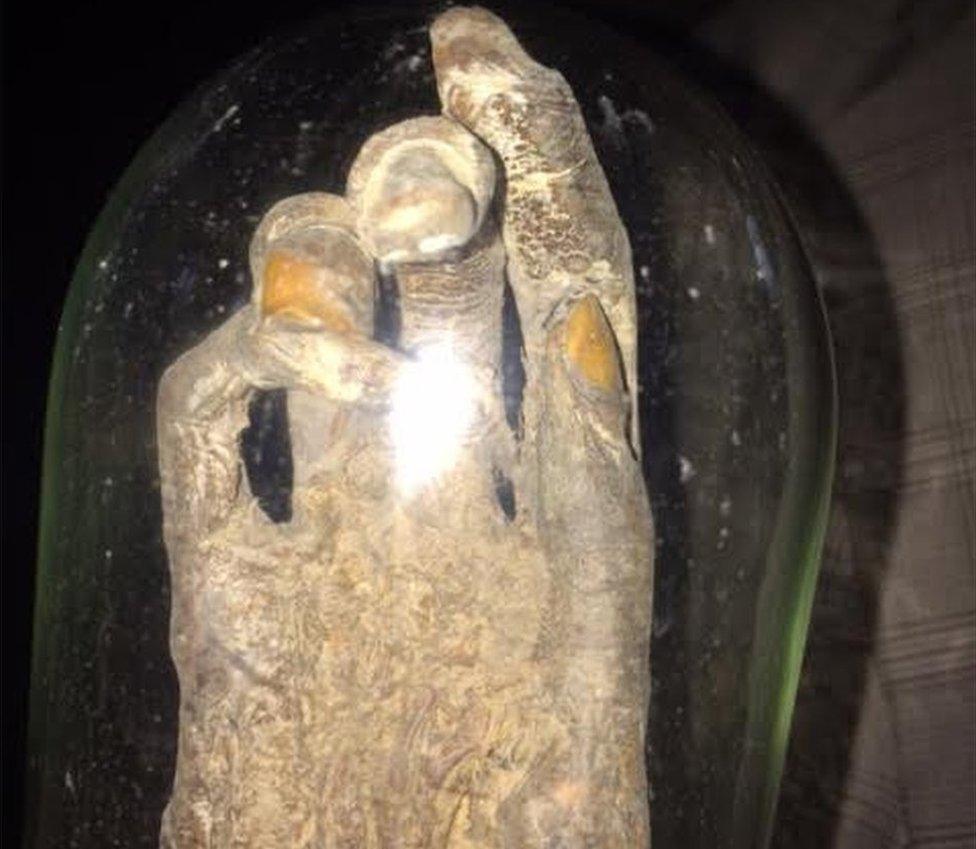
St Oswald and St Arrowsmith's Church in Ashton-In-Makerfield, near Wigan, in Lancashire, houses the shrine of the Holy Hand of St Edmund Arrowsmith.
He was martyred at Lancaster in 1628 by being hanged, drawn and quartered.
After his death, a Catholic managed to cut off one of his hands, which is now preserved in a silver casket.
The Holy Hand has been the object of veneration for more than two centuries.

Skull of St Ambrose Barlow
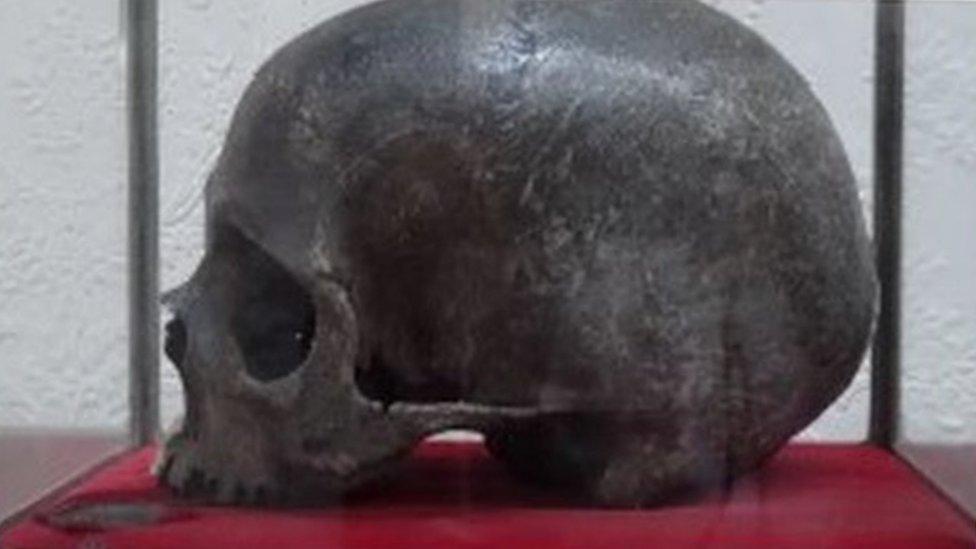
The skull of St Ambrose Barlow is on display at the top of the main staircase in Wardley Hall, Worsley, Greater Manchester - the official residence of the Roman Catholic Bishop of Salford.
Barlow was executed in 1641 after confessing to being a Catholic priest.
His head was then severed and put on a spike in Manchester as a warning to all who refused to conform to the state religion.
It was discovered in a casket in 1745 in Wardley Hall when a wall of the original chapel was being demolished.
The hall has been known as the House of the Skull ever since.

The cranium of St Simon Stock
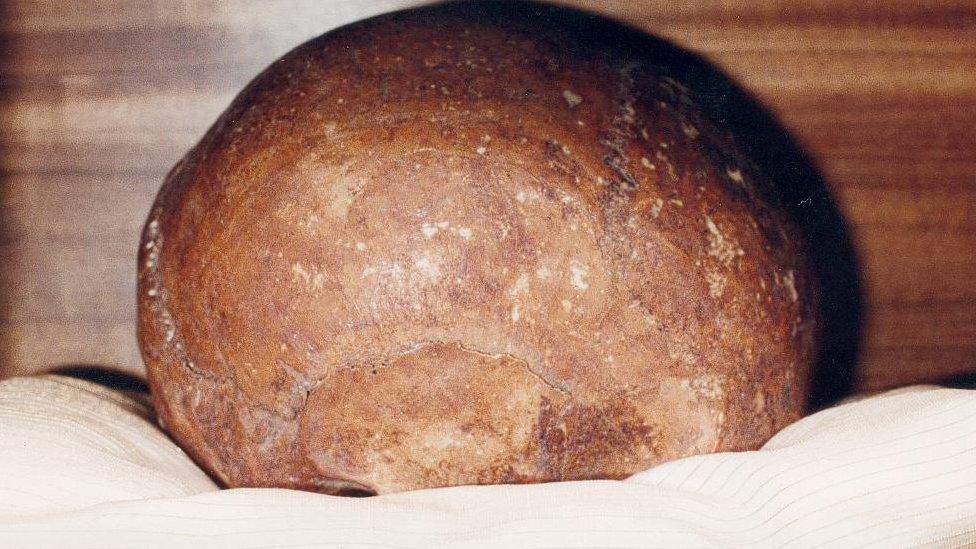
St Simon Stock was an early prior general of the Carmelite religious order, and is believed to have lived in Aylesford, Kent.
Part of his skull is contained in a reliquary at Aylesford Priory, or "The Friars", which was founded in 1242 when the first Carmelites came to Britain.
The remains were transferred from Bordeaux, in France, where he died in 1265.
His bones are still preserved in Bordeaux Cathedral.

Severed hand of St Margaret Clitherow
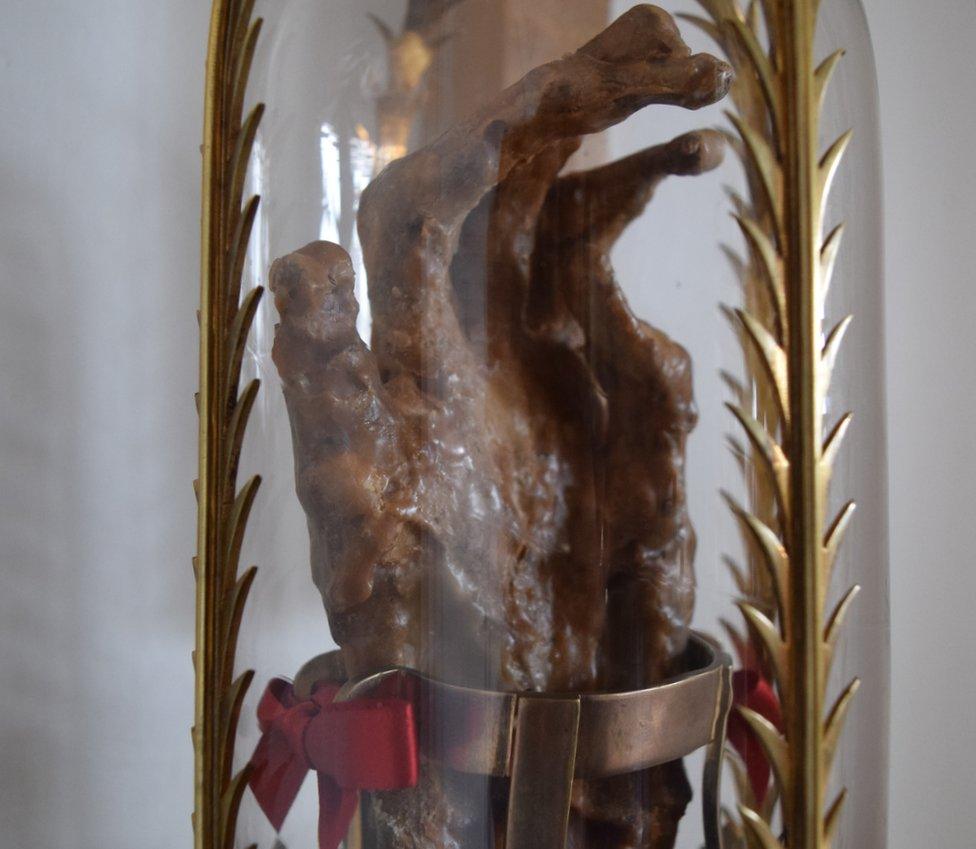
St Margaret Clitherow was a Catholic butcher's wife, pressed to death on Ouse Bridge in York in 1586.
She was tortured with the intention that she gave a plea in the case of allegations that she allowed a Mass to be held in her house, but she died within 15 minutes.
At the time, Catholics had no proper burial sites, and it is believed that a friend tried to retrieve her body from a rubbish tip but was only able to take the hand.
It now rests in the chapel at The Bar Convent, in York.

Blessed John Henry Newman

There are very few relics of Cardinal John Henry Newman, who became England's most famous Anglican convert to Catholicism.
He was beatified by Pope Benedict during the Pontiff's visit to the UK in 2010 following verification that a miracle had been effected in his name.
Newman was the founder of the Birmingham Oratory, where he lived until his death in 1890.
A casket in the chapel which has become his national shrine, in the church of the Birmingham Oratory, contains part of a bone, while the handles are from the cardinal's original coffin.

Relics of St Cuthbert and St Oswald

Durham Cathedral was originally built to house the Shrine of St Cuthbert in 1093, his body having been moved from Lindisfarne in Northumberland following Viking invasions during the 9th Century.
It contains his body, and also the head of St Oswald, who was killed at Oswestry in 642.
Cuthbert, who died in 687, is regarded as the patron saint of northern England.
Relics found in his tomb, which form part of the cathedral's collections, include his Anglo-Saxon vestments and pectoral cross.

Thigh bone of St Alban
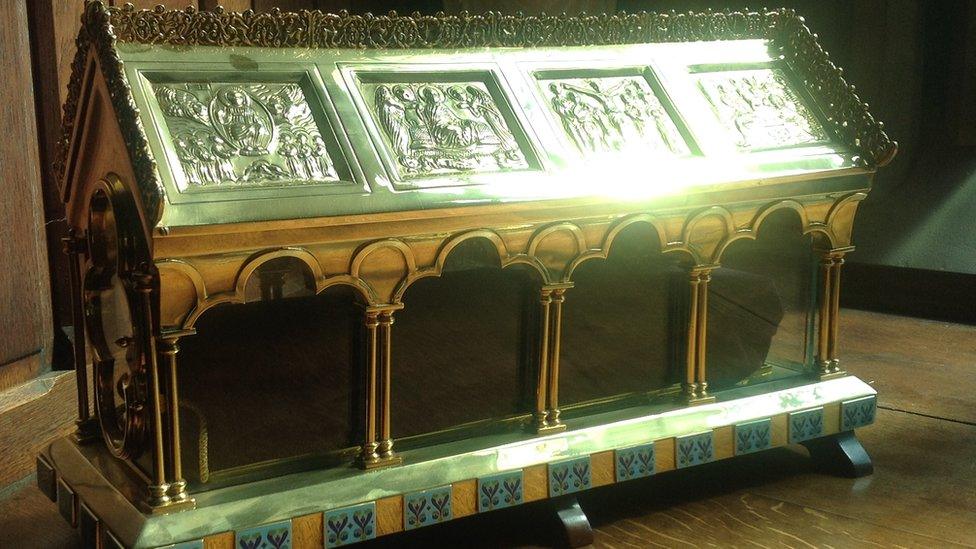
St Alban is venerated as the first recorded British Christian martyr.
He was executed for his Christian faith near the Roman city of Verulamium, now St Albans in Hertfordshire, in about 250.
His remains were given by the Pope to the Holy Roman Emperor Otto II in the 10th Century and were enshrined in the Abbey of St Pantaleon in Cologne.
The largest relic in England of the protomartyr is his thigh, preserved at St Michael's Benedictine Abbey, in Farnborough, Hampshire.
St Alban's Cathedral has a shoulder-blade.
- Published24 May 2016
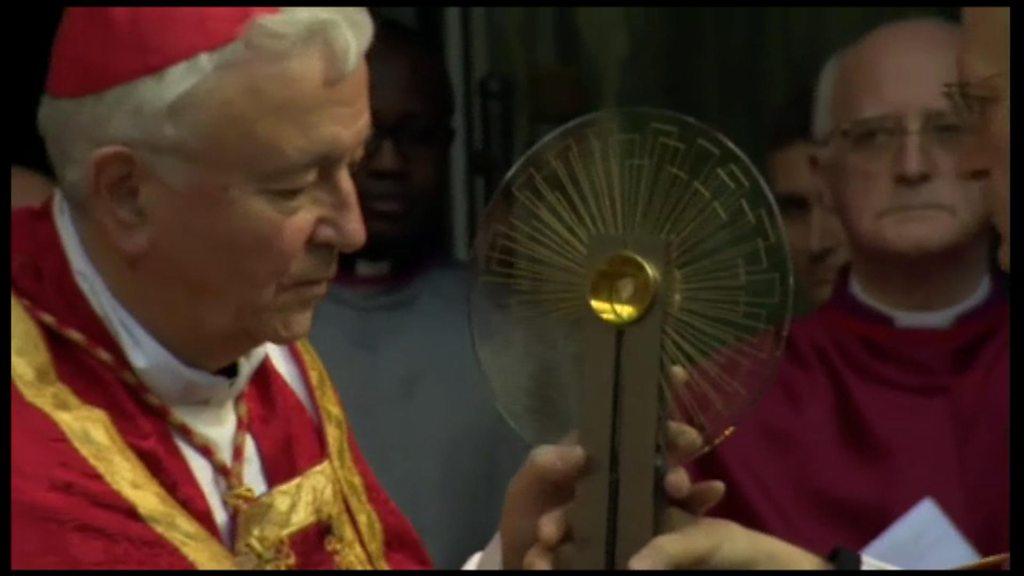
- Published23 May 2016
